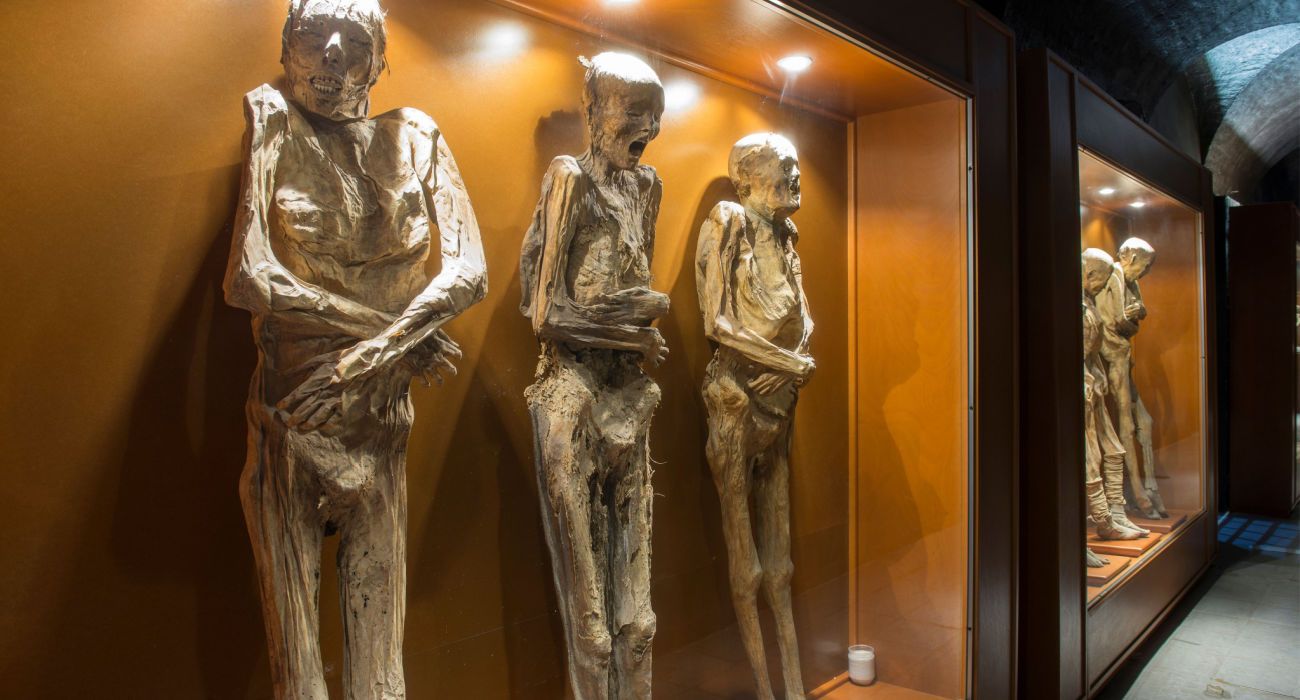Quick Links
Mexico has plenty of ancient history, being home to the Aztec Empire, much of the Maya Civilization, and plenty of other civilizations that existed alongside or before them. But not all of Mexico's attractions and mummies are ancient. One of the most spooky (and for some, cringe) attractions is the naturally mummified bodies at the Mummy Museum Guanajuato (in Spanish called El Museo De Las Momias). Guanajuato is a city located in the center of Mexico.
The Mummies of Guanajuato are not old. Instead, they are from relatively modern times dating from a cholera outbreak in 1833. It calls to mind the Prague Sedlec Ossuary, which is also not for the faint-hearted (think of artworks and even a coat of arms made from human bones). There are many unusual museums around the world that some people enjoy visiting.
History Of Mummies And Why They Were Unburied
Between 1870 and 1958, some bodies were disinterred due to a local tax placed on "perpetual" burial. Those bodies that were not paid for were removed, and the bodies in the best condition were stored in a nearby building. The number of deaths from the cholera outbreak meant that more cemeteries had to be opened. The victims needed to be prioritized for burial.
The burial tax meant that relatives had to pay a rental fee for the grave for four years. The burial tax was eventually scrapped in 1958. Over time the mummies in the building became an attraction and eventually became a museum in 1969. Initially, graveyard workers charged locals 7 pesos to see the mummies. The practice of exhuming the bodies eventually came to an end in the 1950s.
- Number Of Mummies: 59 On Display, 111 Total In The Collection
The bodies were naturally mummified, although some were at least partially embalmed. It is estimated that around 2% of the bodies become mummified. Some mummies can still be seen in the clothes they were buried in and represent people of all ages.
The Mummies Of Guanajuato Are Not For Everyone
Some may find seeing mummies that are only a bit over 100 years old. It is also not a family-orientated attraction, and so personal judgment is suggested in considering whether to visit or not. The expressions on the faces of some mummies may also be haunting. There are some chilling stories about the Mummies of Guanajuato. Some stories of the mummies are too much to write about here but can be read on Guanajuatomexicocity.com.
While some may find the mummies distasteful, they have become a notable part of Mexican popular culture. They have also been featured in movies like the 1979 movie Nosferatu the Vampyre (a German movie). They also echo the "The Day of The Dead" - an event where one can learn how Mexico has a different perception of the departed.
Visiting The Mummy Museum Guanajuato
Today anyone can visit the Mummy Museum Guanajuato, which is open daily. The museum has three major rooms where the mummies line the walls, and each has a description of the person. As noted, families with children or people who are prone to nightmares may want to reconsider visiting the museum.
- Opening Hours: 9.00 am to 6.30 pm Daily
- Entrance Fee: 85 Pesos ($5.50)
For those who can, visiting the Mummy Museum Guanajuato is certainly an unforgettable experience no one will forget in a hurry. Read more about the museum on its website (only in Spanish).
Guanajuato's Other Noted Attractions
The mummies have become Guanajuato's most popular attraction.
Guanajuato has claims to fame - its historic center and the mines have been a UNESCO World Heritage Site since 1988 (making them some of the oldest to be UNESCO protected). The mines were founded by the Spanish in the early 16th century and became the world's leading silver extraction for a time in the 18th century. Mine shafts plunge as much as 600 meters (yards).
The city itself is noted for its fine Baroque and neoclassical buildings that reflect the past prosperity of the silver mines. The churches of La Compañía and La Valenciana are some of the most stunning examples of Baroque architecture anywhere in Latin America.
Visitors may want to consider taking a guided tour of Guanajuato - including its historic center, tunnels, and mines.

